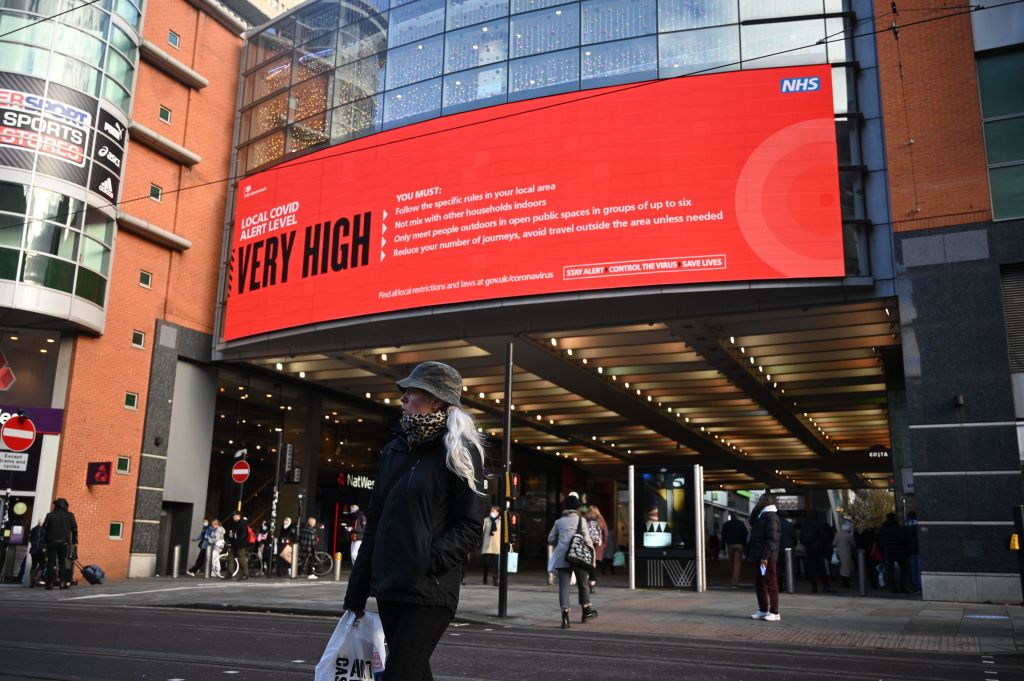There has been much to question about the government’s policies during the coronavirus crisis, but the decision to announce a second lockdown this week was perhaps the most perplexing.
One unusual aspect was that with the announcement of the regional tier policy in October, Boris Johnson had finally managed to distance himself from his increasingly unbalanced scientific advice. Instead, his regional policy actually reflected what was happening on the ground. Covid-19 cases were on the up in England, but in a highly regionalised manner. A one-size-fits-all strategy of closing everything down except schools seemed not to make sense except to the increasingly dogmatic pro-lockdown scientific advisory community.
The abrupt reversal that led to the nationwide lockdown is also surprising, particularly as its imposition comes just as the data seems to show the much-maligned tier strategy may have been actually working. For whatever reason, infection rates in some of the areas which had been causing most concern – Manchester, Liverpool and Nottingham – were actually starting to level and even fall.
We are drowning in a sea of numbers in this pandemic. Endless graphs and statistics are reproduced on social media and our erstwhile Professors, Whitty and Vallance, have been trying to educate the public as to why the government’s decisions need to be taken. Increasingly however, the data appears to have been weaponised to suit a narrative, one that seeks to support a national lockdown rather than the more nuanced regional tiered strategy.
On Wednesday, Chris Whitty was forced to send a letter to ‘clarify’ evidence he gave to the Science and Technology Select Committee, whilst the Office for Statistics Regulation the following day wrote to the chief scientific advisor, Patrick Vallance, with a warning about the government’s transparency when it comes to data, saying ‘there is potential to confuse the public and undermine confidence in the statistics.’
The data has become a big deal. The reason the government abandoned its regional tier strategy in favour of a lockdown was the revelation in documents released by SAGE at the end of last week (but dated 14 October) that Covid infections and therefore deaths were exceeding the government’s own ‘reasonable worst-case scenario’. This meant, potentially, more than 85,000 deaths over the winter. In a blink of an eye, Boris Johnson was on the television announcing the lockdown.
But what actually happened? Well, coronavirus infections and admissions had significantly risen in October, but this was clear before the announcement of the tiered strategy. The sharpest rise came around mid-October and the modelling which quoted up to 4,000 deaths per day by December was based on numbers from this period.
Despite coming under significant pressure, the government had stuck with its regional strategy because the increase was predominantly concentrated in some northern and Midland areas and was often most apparent in places with a university campus. However contentious the different tiers were – and the unhappiness they caused in individual regions – by the end of October infection rates in several areas were reducing, and in most areas the rate of increase had dramatically fallen. Whether this is a coincidence or not, the regional measures which sought to keep as much of the economy open as possible appeared to be having the right impact.
More recent statistics from the coronavirus symptom app, suggest the national R rate is nearing or has reached 1.0 again. And although figures from the Office for National Statistics (ONS) released today continue to show rising infections for the last week of October, the rate of increase is now less than previous weeks. Hospital beds remain an issue – it always is in the NHS – but not across the whole country. This raises two questions: firstly, was the government right, when the rise in infections was greatest in mid-October, to resist calls for a ‘circuit-break’ two-week lockdown? Secondly, if infections are now levelling and the picture around the country is so patchy, why is a four-week national lockdown needed now?
The irony is that if a two-week national closure been announced on the 12 October, as many in SAGE wanted, the lockdown would have been hailed a success. Instead, the tiered policy was abandoned before it had a chance to work and data was fully collected to see if it was having any effect. A new national lockdown has been put in place even though the figures now appear already to be improving. It is really difficult to explain why.







Comments